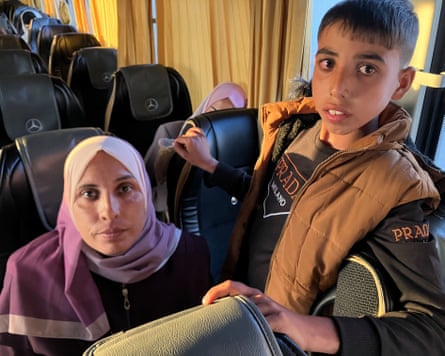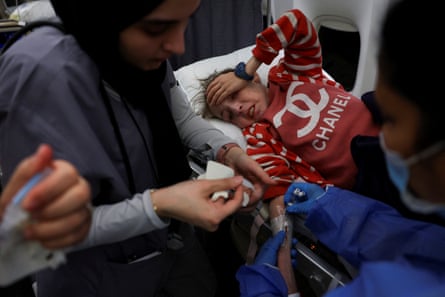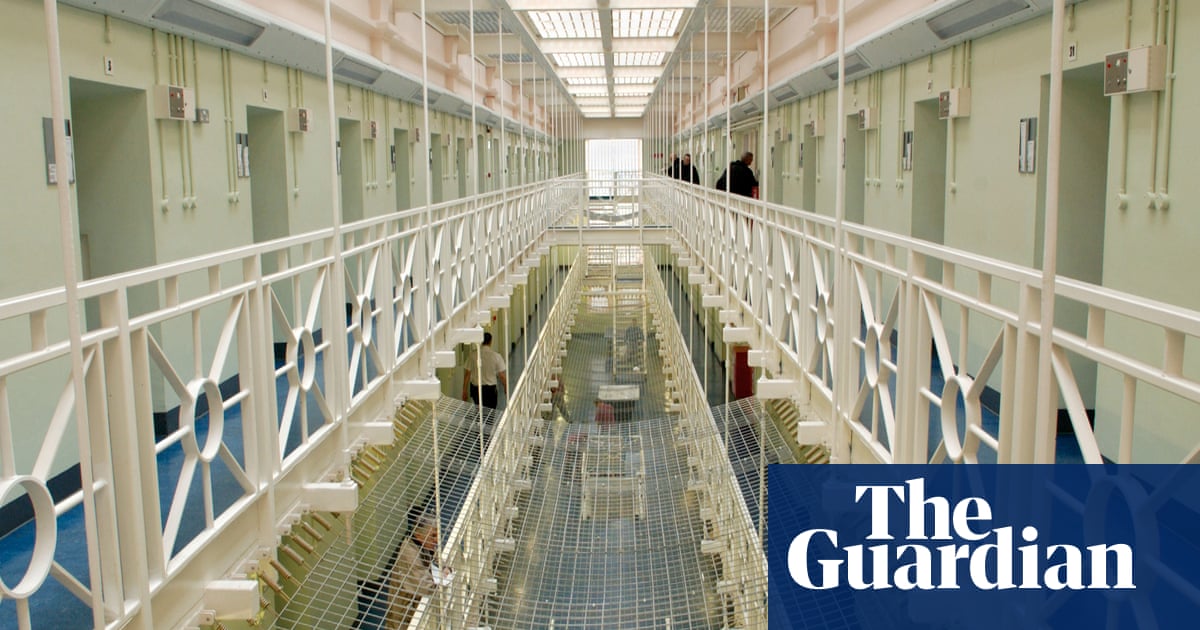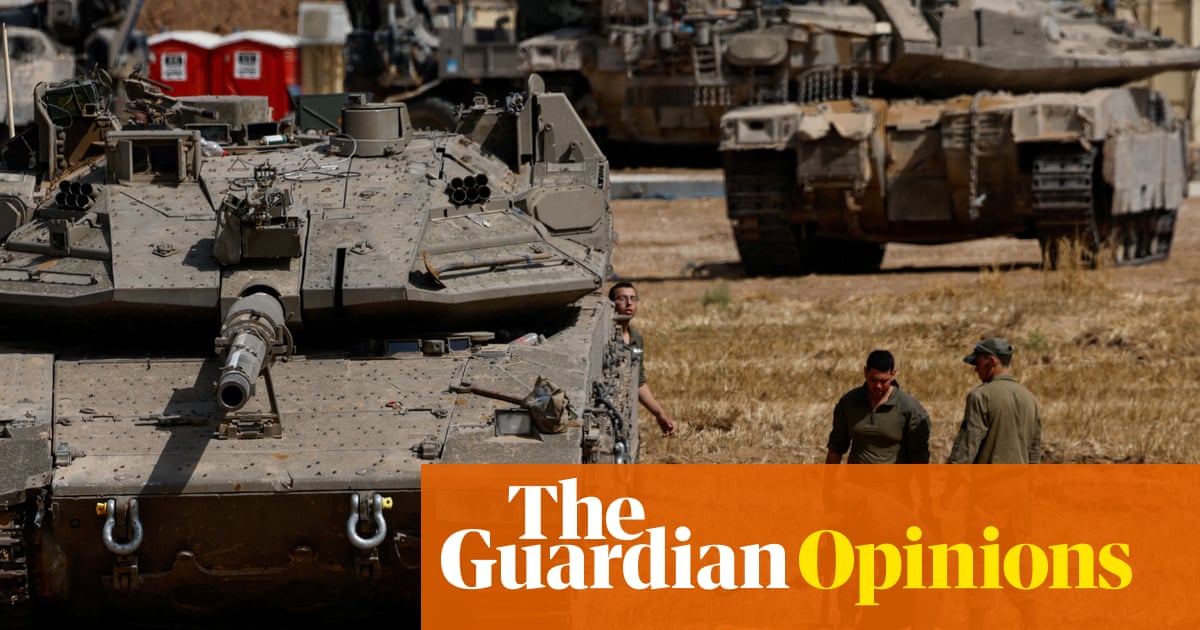It was a short distance but a very long journey from a bombed out hospital in Gaza to the Jordanian border. Zeinab al Astal arrived with her two sick sons as dusk was falling on Wednesday evening, and she seemed stunned they had made it at all.
Twenty four hours earlier she had been watching chunks of ceiling crash down to the floor around them, after Israel bombed the European hospital in Khan Younis where they were staying.
“This medical evacuation saved us,” she said, minutes after crossing into Jordan, where her sons Ahmad, 13, and Qassem, 15, will both get treatment for leukaemia, something that is now almost impossible inside Gaza.
Medical equipment has been destroyed, medicines are running out, one in three hospitals have been closed by attacks, those partly functioning are overcrowded with victims of airstrikes and assaults, and the ranks of doctors and nurses have been decimated by Israeli detention and killings.
The al Astal brothers and other cancer patients are doubly unlucky children, trapped in a brutal war while also fighting their own traumatic battles against a deadly disease.
Their best hope of survival is to apply for treatment abroad, and then wait for Israeli authorities’ response – although trying to get an exit permit can feel like a grim lottery.

Qassem was diagnosed with cancer a year and a half before the family reached Jordan, and Ahmad has been ill for nearly a year, needing regular blood transfusions in recent months.
The urgent need for medical evacuations from Gaza outstripped capacity even before the war, and the UN estimates there are now more than 12,000 people who need to travel for treatment they cannot get inside the Strip.
The backlog is so great that WHO director-general Dr Tedros Adhanom Ghebreyesus warned in January that unless Israel allowed greater numbers to leave, it would take five or 10 years for all children in need of help to reach hospitals where they could be treated.
Nine-year-old Sama has a brain tumour, and the seizures it causes have been getting steadily worse. “There are no working MRIs in Gaza, so it is difficult to tell the nature of the tumour and decide how to treat it,” her mother, Isra, said.
Four months ago her doctors applied for an urgent medical evacuation, which was approved after a few days. But Israeli authorities said Sama’s six-year-old brother Abdul Rahman would have to stay in Gaza.
Isra could not face leaving her younger child to face the incessant explosions, hunger and horrors of war without his mum. “We declined the offer to take only Sama,” she said. It took weeks for her to get permission to leave with both children.
Sama, the al Astal brothers and one other child who is fighting cancer left Gaza on Wednesday with their close relatives, under an initiative agreed between Jordan’s King Abdullah and US President Donald Trump.
Jordan wanted to evacuate the children from Gaza by air but Israeli officials refused, Jordanian officials said. So just the final section was covered in helicopters, from the Jordanian border crossing to the hospital in Amman.
It is about 80 miles (130km) in a direct line from eastern Gaza to the Allenby Bridge border crossing, but the group spent all day travelling overland across Israel, including six hours waiting to leave Gaza without any water, al Astal said.

The families came out of the Strip with little more than the clothes on their back and a plastic folder of medical documents for each sick child. They are likely to return with nothing more than that.
On 13 May at the Kerem Shalom border crossing, Israelis seized the cash and possessions of several Palestinian families who were travelling back into the Strip after getting treatment in Jordan, Jordanian officials said.
Those who get out represent just a fraction of children in urgent medical need. Rawan, just over a year old, has been waiting since the end of 2024 for permission to get treatment outside Gaza.
Jonathan Crickx, Unicef spokesperson – who met Rawan and her mother this week – spotted her in the Nasser hospital because, among rows of severely malnourished children, she looked relatively healthy. Her plump cheeks concealed a failing heart.
“She has a congenital heart issue and needs an operation urgently. Her mother applied for medical evacuation five months ago and she is still waiting for approval.” he said.
“Her brother also had a medical condition requiring evacuation and he died recently while on the waiting list.”
Rawan’s mother is terrified her daughter will slip away next, but is entirely helpless. The surgery she needs is no longer possible in Gaza.
“The entire health system is on its knees, only 20 hospitals out of 35 are partially functioning,” said Crickx. “They have been running out of anaesthesia and anti-coagulant, and they long ago ran out of supplies to treat children with cancer.”
To get permission to travel, cases are put forward by doctors in Gaza, and most are endorsed by the WHO before they are sent to Israeli authorities for assessment.
Between the start of the war in October 2023 and the middle of last month, more than 7,200 Palestinians were medically evacuated from Gaza for treatment.
The largest group of patients were treated for trauma injuries but hundreds had cancer, blood diseases, eye problems and cardiovascular disease. They have been treated in countries across the region, from Qatar to Turkey, in Algeria and EU countries.
More than 15,000 children have been killed by attacks and airstrikes since the war began, figures from health authorities in Gaza show. Other lives have been cut short by diseases ranging from measles to diarrhoea, which spread easily in shelters and tent encampments with little sanitation or clean water, or by hunger.
Malnutrition has killed 57 children since Israel stopped letting food and medical aid into Gaza in March, the UN said. Tens of thousands more are at risk of sliding into a state of acute malnutrition.
Hunger also makes children more vulnerable, weakening their bodies and starving them of the energy they need to fight disease.
“People in Gaza are trapped in a dangerous cycle where malnutrition and disease fuel each other, turning everyday illness into a potential death sentence, particularly for children,” the WHO said.
“Malnutrition weakens the bodies, making it harder to heal from injuries and fight off common communicable diseases.”

.png) 9 hours ago
5
9 hours ago
5

















































